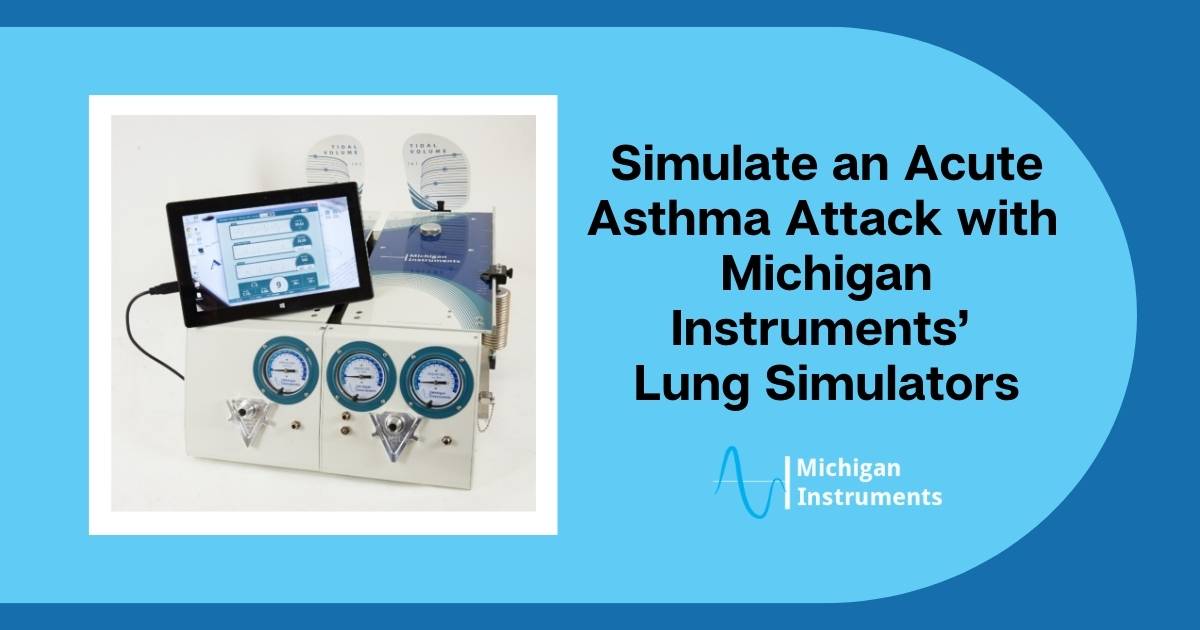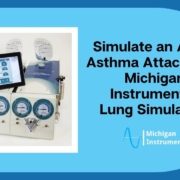
Asthma is a chronic condition that inflames and narrows the airways in the lungs. In fact, nearly 26 million people in the U.S. have asthma, making it one of the most common forms of respiratory disease in the country.
Fortunately, you can easily replicate asthma attack simulation on a lung simulator for education and research purposes.
Why Use Michigan Instruments Lung Simulation for Learning about Asthma?
There are several reasons why our Lung Simulators are a fantastic tool for learning and teaching about asthma; including, but not limited to:
- Safety: Simulation-based education ensures patient safety. This allows the user to make mistakes and gives them the ability to correct them, without harm to a patient.
- Reduced Errors: Simulation provides opportunity for continued practice. This results in less error while working with humans.
- Preparation for Several Scenarios: Simulation devices offer a wide range of lung compliance and airway resistance settings. This offers the students and professionals an immersive and nearly hands-on experience.
Settings For An Asthma Attack Simulation
By creating a severely restricted airway and pairing it with a slightly compliant lung, you can provide settings that simulate an acute asthma attack.
Here are the settings we recommend (using our lungs) to create a successful simulation:
- Functional Residual Capacity: Should be between 860mL and 990mL per adult lung and 80mL to 200mL for the infant lung.
- Please note that residual capacity is only considered functional if it’s downstream (during inspiration) of the airway resistor.
- Airway Resistance: A resistance of 50cmH2O/L/s should be used to simulate this condition in adults. The user should use 500cmH2O/L/s to simulate this condition in infants.
- Dynamic Compliance: Use a lung compliance of .04L/cmH2O for adults and .004L/cmH2O for infants. It’s important that this value is “dynamic” so that the compliance of the simulated lung will decrease as breaths begin to stack.
How is This Simulation Beneficial?
During normal ventilation, the increased airway resistance creates the high proximal pressure seen in victims of an acute asthma attack.
Additionally, the above-average compliance of the simulated patient will cause breath stacking unless the breaths delivered are properly regulated.
You can test many simulations in a number of ways. This allows students to get hands-on experience with rare conditions, replicate case-specific failures in ventilators, identify pros and cons of different ventilation techniques and more.
Organizations around the world use our test lungs for a plethora of educational purposes. The flexibility of our equipment allows our devices to replicate hundreds of healthy and diseased lung conditions, like asthma, while providing accurate measurements and data that inform your testing, research, and training.
Learn More About Our Lung Simulation Capabilities
If there is a specific symptom or condition that you would like to replicate, please let us know. We’d love to put together a simulation for you.
For questions or more information about simulations, contact us today.




